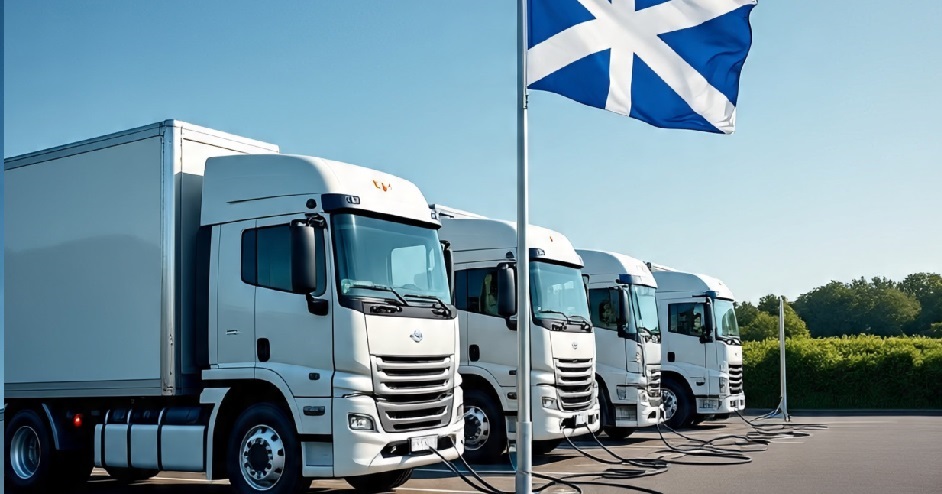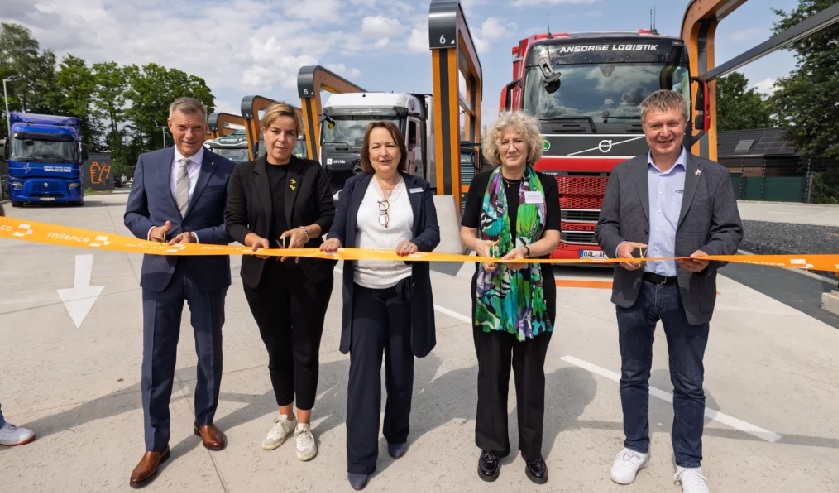The Scottish Government has launched the new two million pounds Heavy Goods Vehicle (HGV) Market Readiness Fund for 2025-26.
It is designed to support HGV operators, manufacturers, financiers and charge point operators (CPOs) to work together to identify investment in HGV Decarbonisation – boosting the economy and reducing transport emissions associated with road freight.
This fund builds on the HGV Decarbonisation Pathway developed in 2024 and early mapping and analysis work which considered where charging infrastructure will be required to best support zero emission HGVs.
Cabinet Secretary for Transport Fiona Hyslop says: “We’re taking the experience and approach developed for bus decarbonisation and applying it to the HGV sector. But we cannot decarbonise HGVs alone, so we’re working to attract further private investment and create the conditions which will best accelerate decarbonisation at pace and scale.”
“There are a large amount of SME operators in our road freight sector in Scotland. As such, we have set aside one million pounds of this funding to specifically support smaller operators. No one and no sector should be left out of the opportunities created by the transition to a net zero transport system,” she adds.
Chris Ashley, Net Zero lead for the Road Haulage Association (RHA), states: “This investment to help operators prepare for Net Zero is invaluable, particularly for smaller businesses with limited back-office capabilities. It is a welcome boost when costs and a lack of public charging sites continue to hold businesses back from investing in zero-emission vehicles and technologies. ”
Lamech Solomon, Head of Decarbonisation policy at Logistics UK, indicates: “Operators have been clear that the path to decarbonisation will be difficult and expensive. This fund, which will support early collaboration between operators, manufactures, financiers and infrastructure providers should help the sector to overcome the initial barriers to investment.”
Background
Heavy goods vehicles make up the majority of heavy duty vehicles in Scotland.
In 2023, there were approximately 36,500 units registered, making up around 1.2% of total road vehicles registered in Scotland.
In 2023, an estimated 118 million tonnes of goods were lifted within Scotland by UK HGVs and transported to destinations within Scotland and about 16 million tonnes of goods from Scotland were delivered to destinations elsewhere in the UK.
The majority of HGV operators in Scotland have 0-2 vehicles registered on their license and therefore do not have large amounts of capital to invest in the transition to zero emission vehicles.
The private sector is willing to invest in zero emission HGVs, but public funding will be needed to help the sector get over some of the initial capital costs and absorb some risk of new fleets of vehicles and their supporting charging infrastructure.
The HGV pathway acknowledges the need for new financing and business models for the electrification of heavy duty vehicle fleets and the development of their supporting infrastructure.
The HGV Decarbonisation Pathway for Scotland committed various stakeholders to different actions to increase the speed of decarbonisation of the heavy duty vehicle (HDV) sector.
The Scottish Government is delivering on its actions in the Pathway; having hosted a financing forum to bring together HDV and HGV operators with finance, energy and leasing organisations who are developing products to invest in zero emission vehicles.
The financing forum was held on the 19th of March 2025 in Glasgow.
26 organisations attended including sovereign banks, financial institutions, chargepoint operators, fleets, manufacturers and traditional financiers and novel/new financiers.
Following this, Transport Scotland has continued to work and engage with those stakeholders interested to work together with key partners in the sector to develop investment opportunities into vehicles and infrastructure in Scotland.
READ MORE
-
Autel Energy: “We are ready for the DACH market”
The company aims to strengthen its presence in Germany after adapting its portfolio to meet market demands. With charging infrastructure still falling short, Autel sees strong growth potential through to 2030. What role does standardisation play in this landscape?
-
SETA launches €27m tender for 28 E-Buses for Italy’s public transport
The tender also includes the possibility of acquiring spare parts for the entire operational life of the vehicles, or alternatively, a full maintenance service. When’s the deadline?
-
Milence opens first public e-truck charging hub in the Ruhr region
Recklinghausen is Milence’s fifth charging hub to officially open in the country. By the end of 2025, Germany will be one of the largest markets in the company network, with a total of eight operational hubs.










